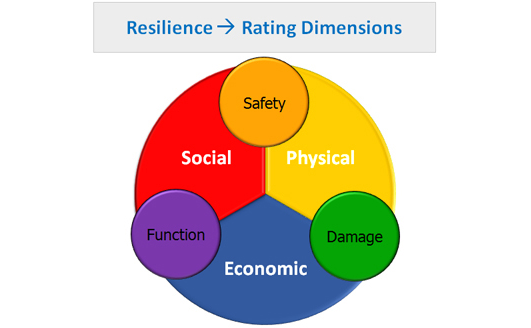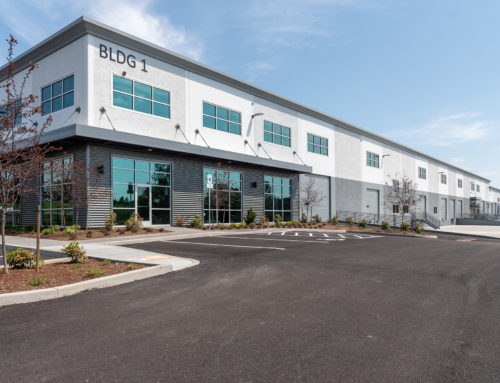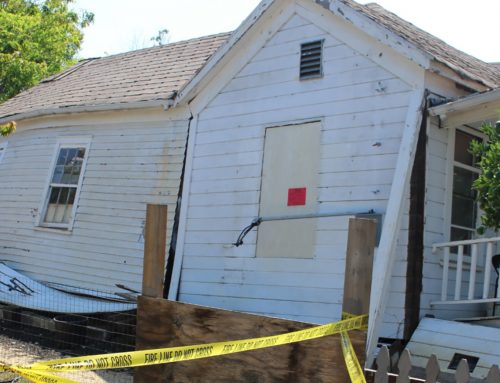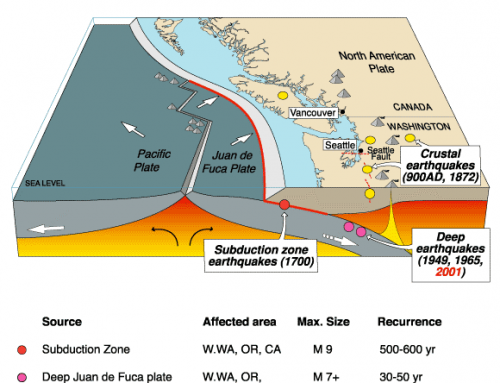Just a few years ago resilience was a seldom used word that was as likely to be applied to someone (“they’re a resilient person”) as something (“that coating has some great resilience”).
Today, resilience is a frequent topic of conversation in the northwest and has become almost synonymous with earthquake preparedness. Thanks to a big shot in the arm from an article in the New Yorker this summer, the topic suddenly clicked for many Portlanders in a way that it hadn’t before. It’s not that the local press hadn’t said all the same things—they had—but somehow having the monster we’re facing recognized by folks outside the northwest biosphere got our attention in a way that the local stories hadn’t.
For most, once the realization of “The Big One!” dawns in all its dimensions and magnitude, some inward introspection becomes inevitable: Am I ready? I wonder about that bridge I cross every day? Do I have an emergency plan? Does my family have a meeting place? How safe is my building? How would I know?
These are all great questions and there are a lot of resources available to address many of them. But this last question—what about the safety of the building I live or work in, or my children’s school—can be difficult. There are a host of factors that can affect a buildings safety and some of the most fundamental, like “how strong is that concrete wall?”, take more than a casual observation to answer. If you’ve thought about this before, you’ve also probably thought that it might be nice to have a plaque on the front of the building that told you the answer. Maybe like that one that told you the builders were green and use energy efficient practices and grow succulents on the roof. But then you thought, “that’ll never happen!” If that was you, there may be some good news; and “never” may be beginning to happen.
The US Resiliency Council (USRC) is now making its official debut and will provide a rating system based on a scale of 1 to 5 stars that will rate a building for safety, damage and recovery. Much like LEED provides a rating for sustainable practices, the USRC will provide an easily understandable rating for earthquake safety and resilience.
The USRC will rate buildings in three categories:
1) The Safety Rating, which is the ability for people to get safely out of a building after an earthquake
2) The Damage Rating scored on the estimated cost to repair the structure after an earthquake relative to the building’s replacement cost
3) The Recovery Rating, which is the estimated time needed for the building to be usable again following an earthquake, even if full restoration may take longer

This isn’t an entirely new concept. The US Resiliency Council has been incubating in California for several years, but the timing couldn’t be better. The recommendation to use a rating system of some type was included in the Oregon Resilience Plan (ORP) that was presented to the State Legislature in early 2013 and seems to have some clear benefits. The USRC was just in the early stages of formation when the ORP’s Critical Buildings Task Group made the recommendation, and though it wasn’t known then what form it or another system might ultimate take, a rating system was seen as a way to provide consumers –building users, owners, renters—with clear and concise information about the earthquake safety of a structure. It also, I believe, provides a much needed avenue for the marketplace to make discerning decisions about structures based on their safety and resilience—rather than just their cozy accoutrements or carbon footprint.
Old Bricks Look Wonderful in a Building
But not so much if they’re on top of you after an earthquake. And a green building isn’t so “green” if it has to be hauled to a landfill afterward. A rating system gives consumers power to make choices, and while I understand this may cause some building owners to shudder, informed consumers who value resilient structures and encourage them is a much better path to a having a resilient community than trying to mandate our way there.
I’m excited about the traction that the USRC seems to have gained in the past couple years and am looking forward to the launch of their program. While still very new, my initial take is that their approach appears to be solid and well thought out, and I’m looking forward to being part of the organization. They have set high standards for us as Structural Engineering Professionals who will be certified to make the rating evaluations, and have a review process to ensure that rating standards are maintained.
For more information, I encourage you to visit their website at www.usrc.org and start watching for those plaques. This could be the start of something big, and we’ll only be better prepared because of it!

Trent is a Principal Structural Engineer with VLMK Engineering + Design. He was the co-chair of the Critical Buildings Task Group that helped write the Oregon Resilience Plan.




